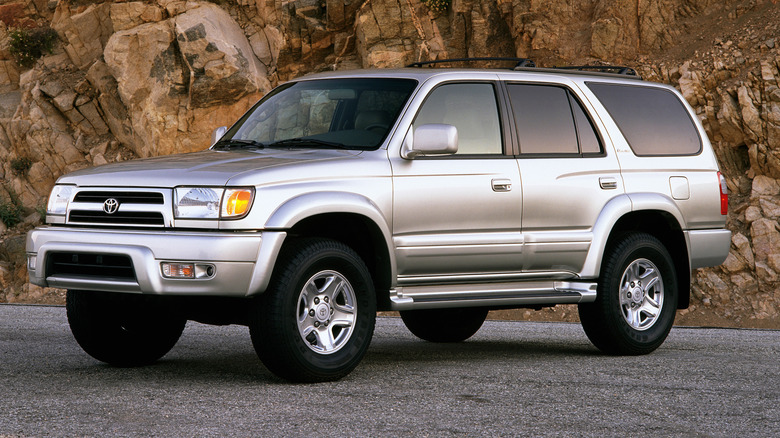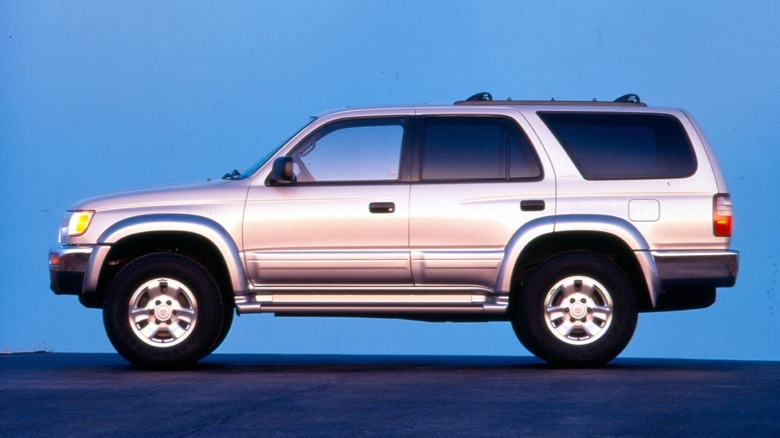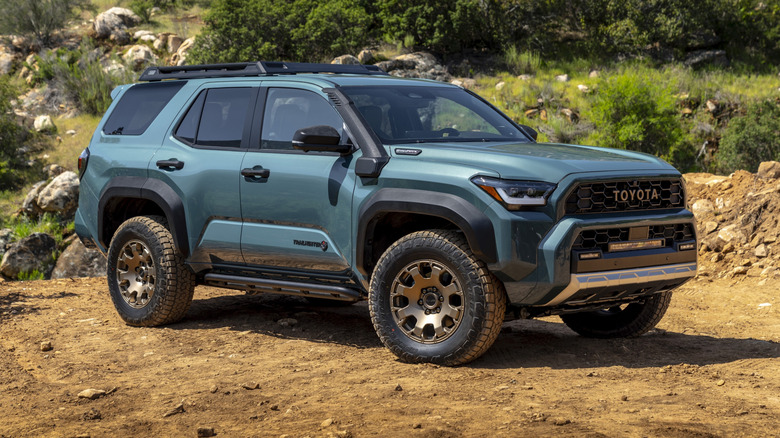Why Did The 4Runner Abandon Its Toyota Hilux Roots?
The Toyota 4Runner has had an eventful journey since debuting in 1984. It was originally developed as a Hilux-based compact SUV and remained directly related to the pickup truck throughout its first and second generations. Following the introduction of the third-gen model for the 1996 model year, it stopped using the Hilux platform altogether and moved to the Toyota Land Cruiser Prado platform. But why exactly did the 4Runner stray so far from its roots?
Toyota made the decision to move the 4Runner away from the Hilux platform because it wanted to reposition it as a higher-end model with a focus on comfort. As such, the off-road-going 4Runner had a more luxurious interior and boasted an imposing presence. It also delivered refined on-road comportment thanks in part to features such as coil spring suspension and rack-and-pinion steering, which reduced steering effort and increased control and responsiveness, making it popular with consumers who previously would have favored something else.
Although fate led it in an entirely different direction from the utilitarian Toyota Hilux, the third-generation 4Runner still had some commonalities with yet another pickup truck: the first-gen Toyota Tacoma that debuted in 1995. The suburban SUV borrowed its 2.7-liter inline-four and 3.4-liter V6 engines from the then-fresh Tacoma truck. The 2.7L 3RZ-FE was good for 150 horsepower and 177 lb-ft of torque, while the 3.4L 5VZ-FE V6, now widely seen by buyers as the best 4Runner engine ever, generated 183 hp and 217 lb-ft.
How much larger was the Prado-based 4Runner than the Toyota Hilux-based model?
By moving to the second-gen Toyota Land Cruiser Prado platform, the third-generation 4Runner got bigger than its predecessor, but not by much. Its dimensions came in at 178.7 inches of length and 68.7 inches of height, meaning it was slightly longer and taller than the second-generation model, which measured around 176.0 inches in length and 66.1 inches in height. The one exception was the width, where they both had a dimension of 66.5 inches.
The Prado-based 4Runner frame was around 200 pounds lighter than the Hilux-based one, but was nonetheless stiffer, and this contributed to making the third-gen 4Runner easier to move around and a bit more efficient. Equipped with the base 2.7-liter engine, 1996 4Runner models were estimated to average 20 mpg — 2 mpg better than 2.4-liter, second-gen models, which were good for 18 mpg.
Inside, the Prado-based 4Runner also expanded in size compared to its predecessor. With all its seats in place, a 1996 4Runner offered up to 44.6 cubic feet of cargo space, which increased to 79.7 cubic feet when the second row of seats is lowered. The second-generation 4Runner, by comparison, had 43.5 cubic feet behind the second row, and 78 cubic feet with all rear seats folded. Additionally, the amount of headroom and legroom available in the Prado-based 4Runner was more than in the Toyota Hilux-based version, in both front and rear.
What platform is the Toyota 4Runner based on these days?
Many years after they first became a platform-sharing pair, the 4Runner's special bond with the Land Cruiser remains as strong as ever. Every Toyota 4Runner generation since the third-gen model has been built on the same underlying platform as the Prado, and the sixth-gen model, which debuted for 2025, is no different. The two share Toyota's GA-F truck platform between them and many other body-on-frame Toyota and Lexus vehicles, including the Land Cruiser and fourth-gen Lexus LX. Others are the Toyota Sequoia, Tundra, Tacoma, and Lexus GX.
To go with the versatile ladder frame chassis, the current Toyota 4Runner is equipped as standard with a widely adopted 2.4-liter turbocharged four-cylinder engine producing 278 horsepower and 317 lb-ft of torque. For those wanting even more, there's an available hybrid powertrain that pairs a 2.4-liter turbocharged four-cylinder engine and an electric motor to generate 326 total horsepower and 465 lb-ft.
That's a lot of grunt when you put it side by side with the third-gen model, and, at 194.9 inches long, up to 78.0 inches wide, and up to 74.0 inches tall, the sixth-gen 4Runner is also significantly bigger than its forebear. Its cargo area is more generous, too, with two-row models able to fit up to 48.4 cubic feet of cargo behind the second row and 90.2 cubic feet behind the first row. In three-row 4Runner models, owners get 12.1 cubic feet with all seats in use, 44.8 cubic feet with the third row folded, and a maximum of 84.4 cubic feet with the third and second rows down. The 2025 Toyota 4Runner is priced from $42,765 (including delivery charges).


